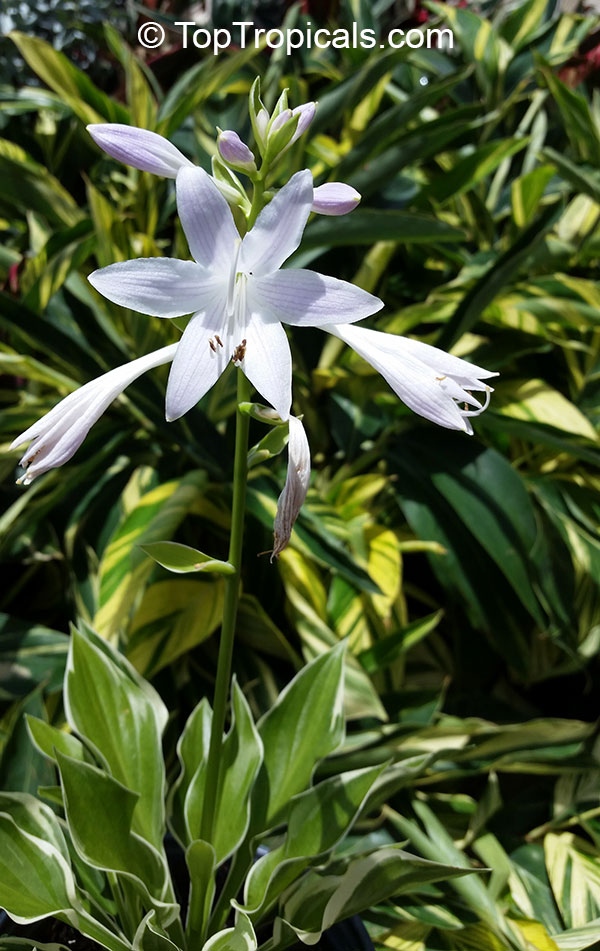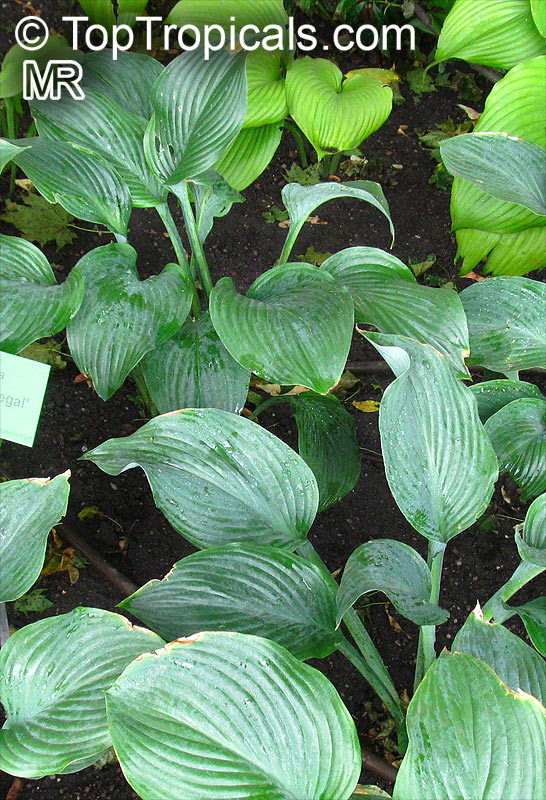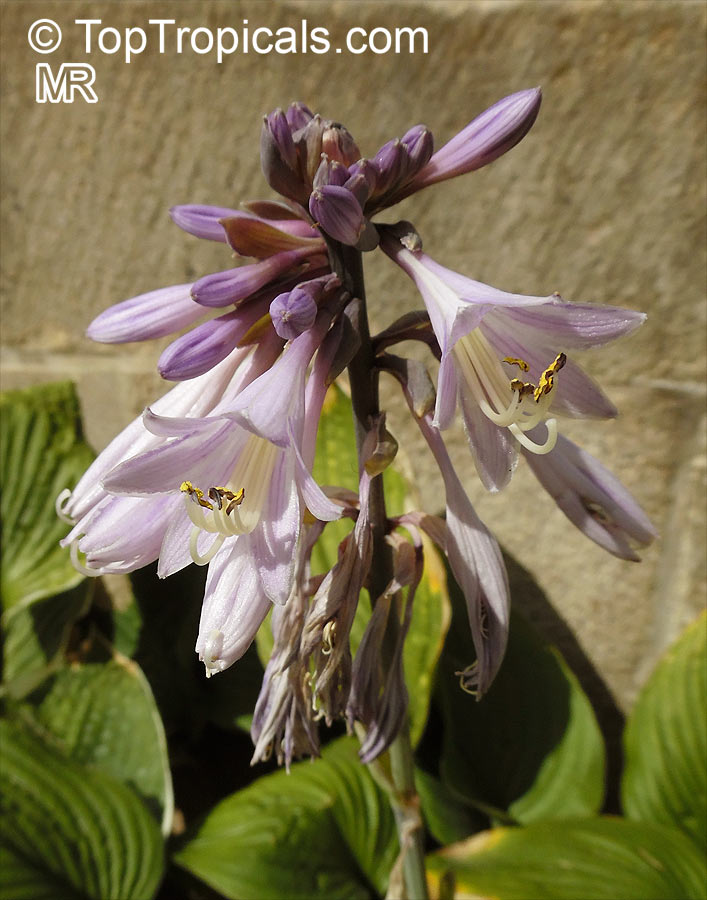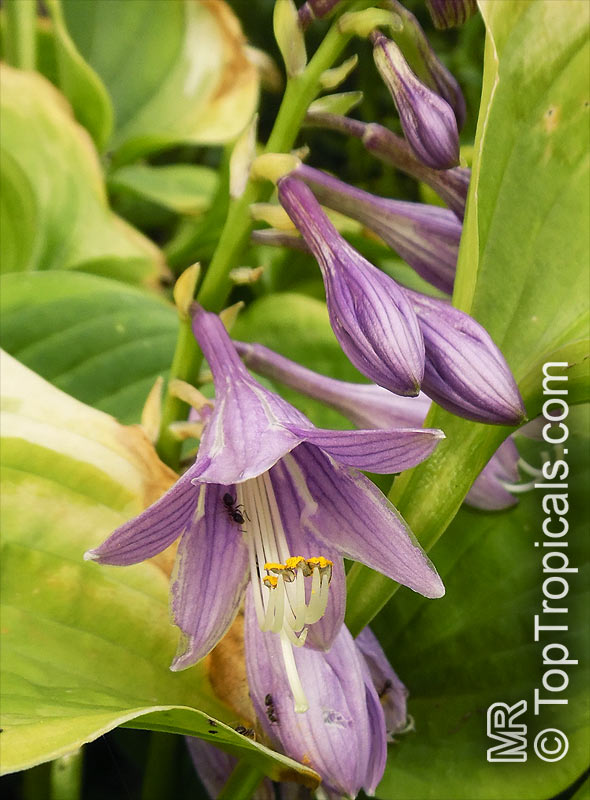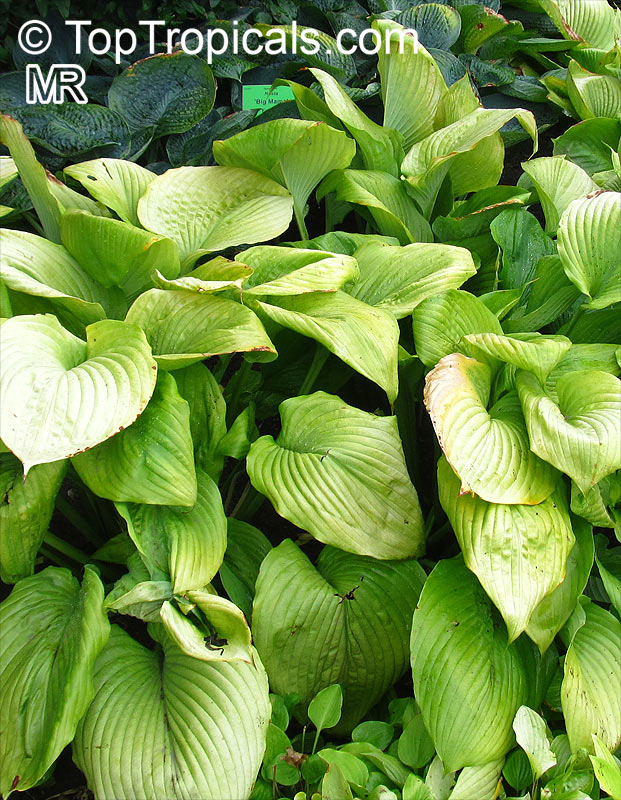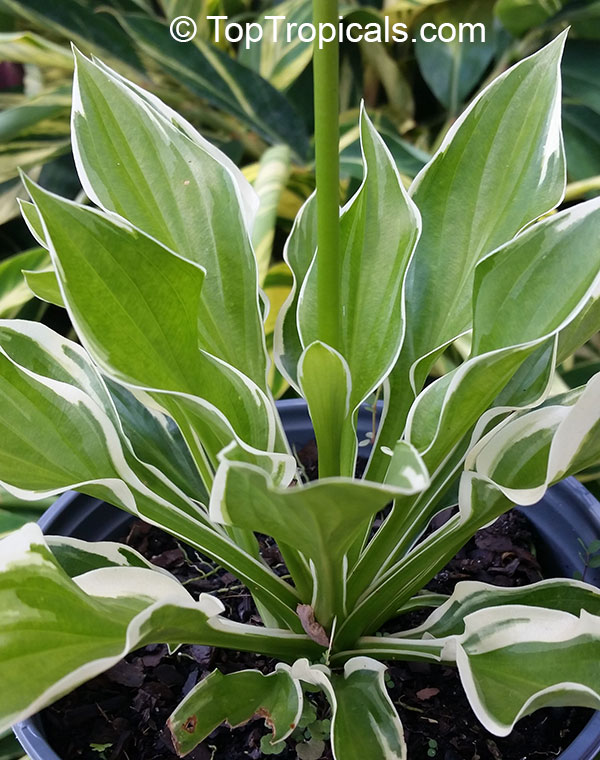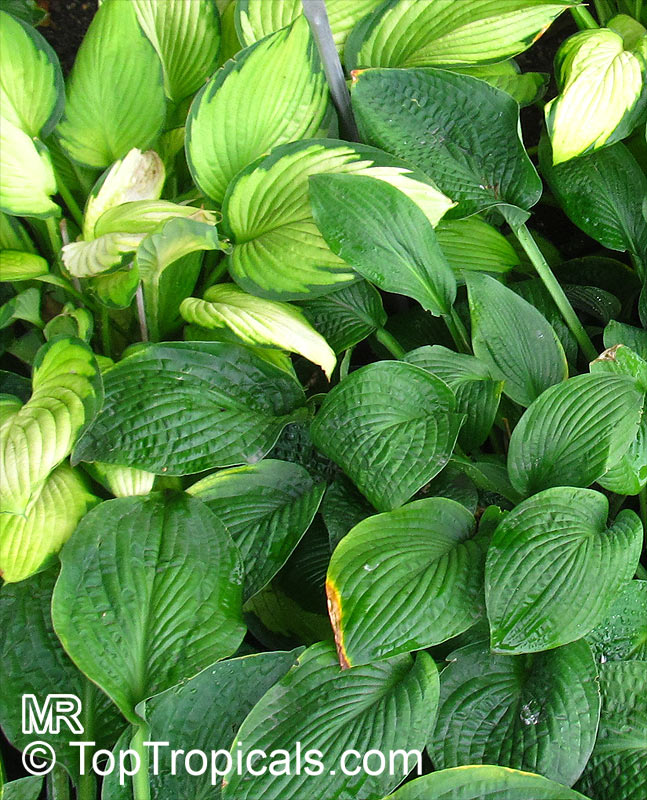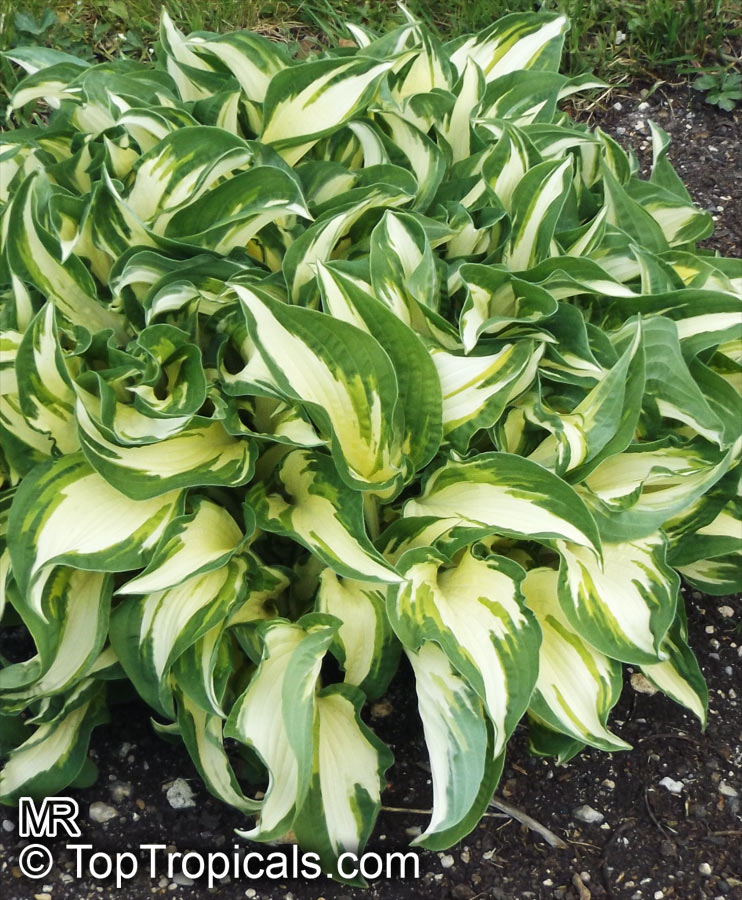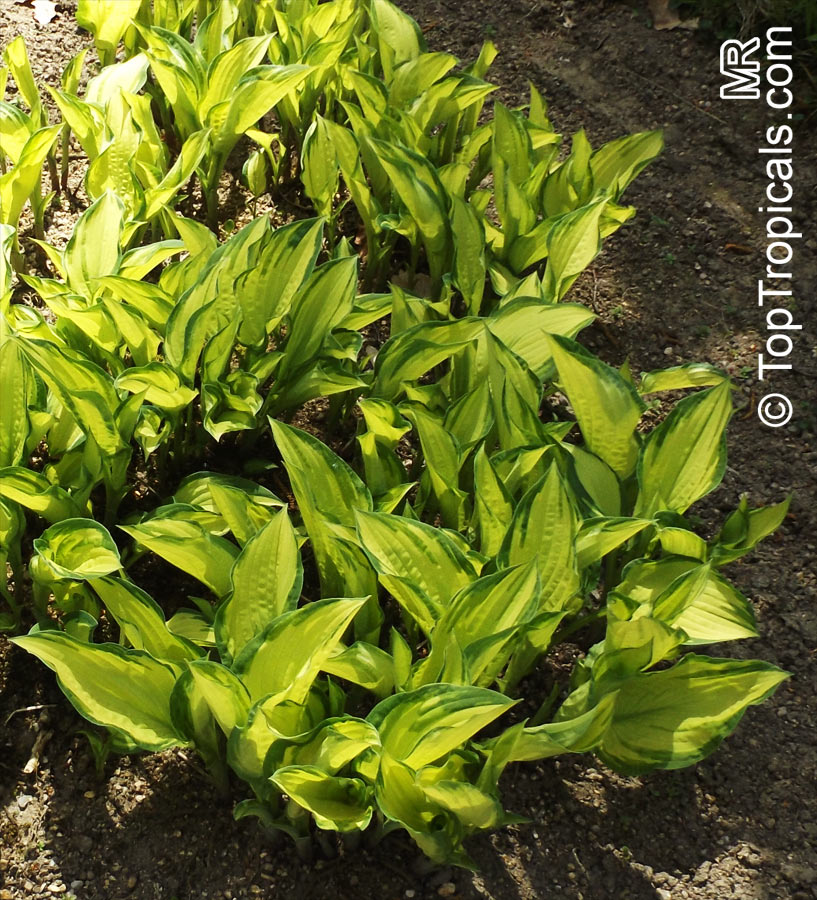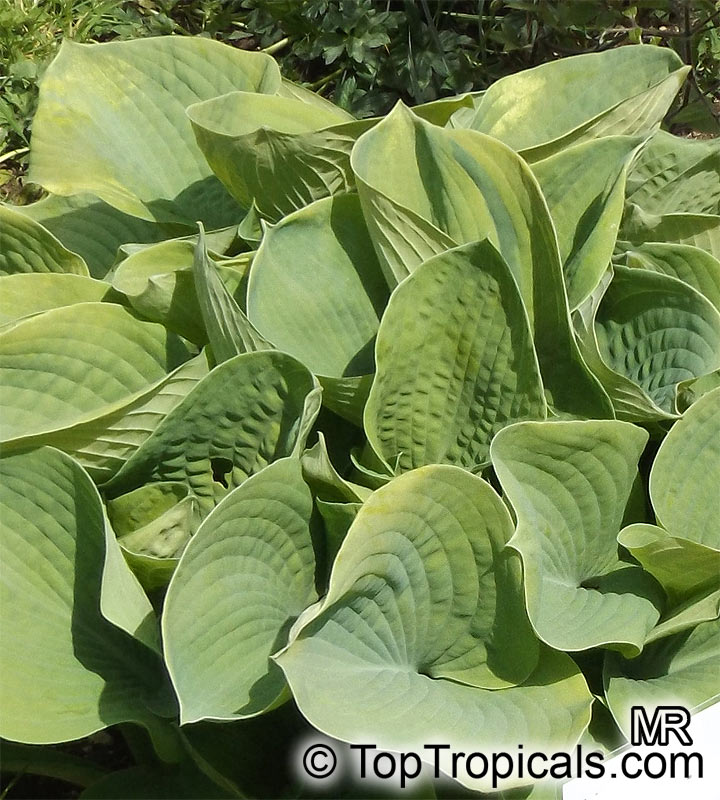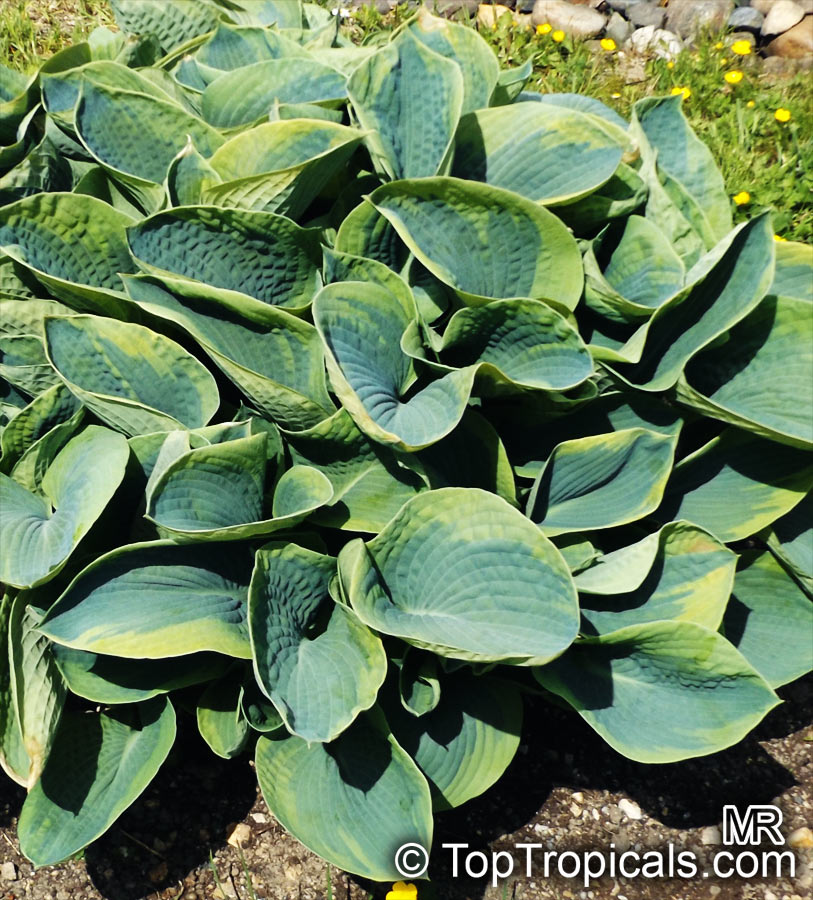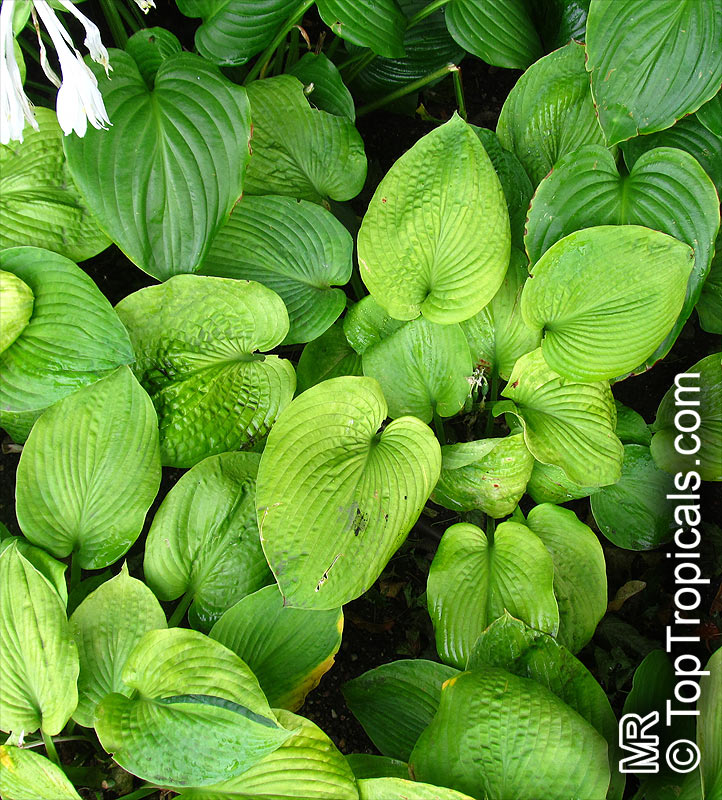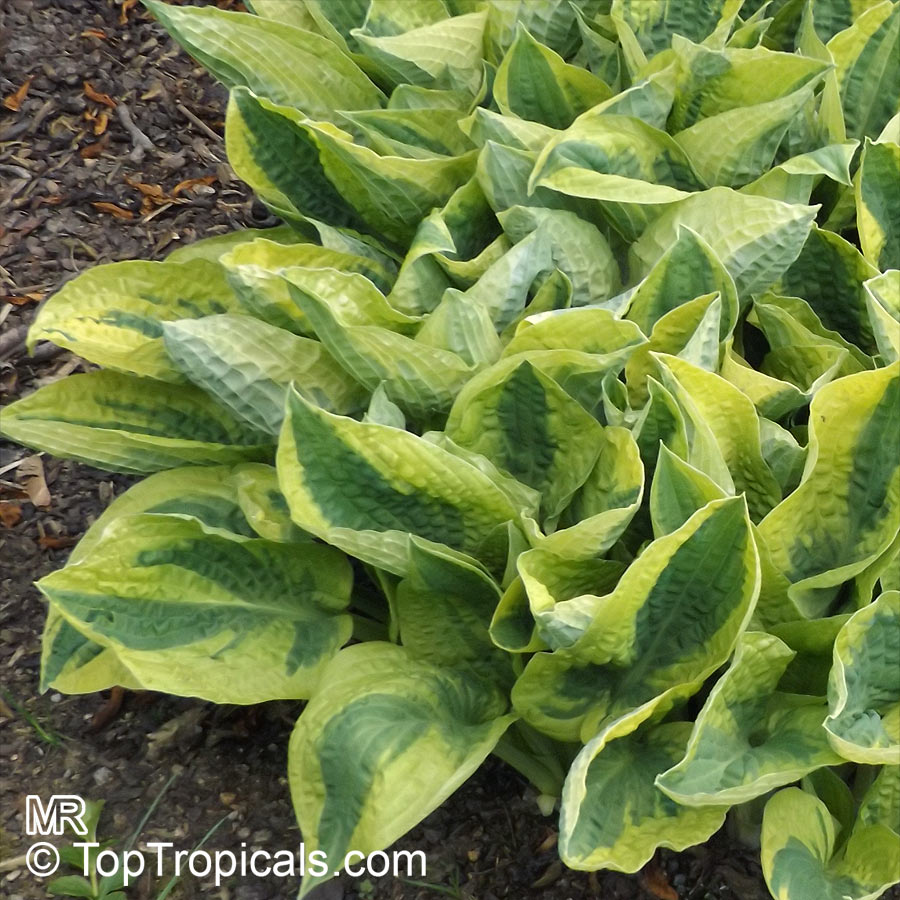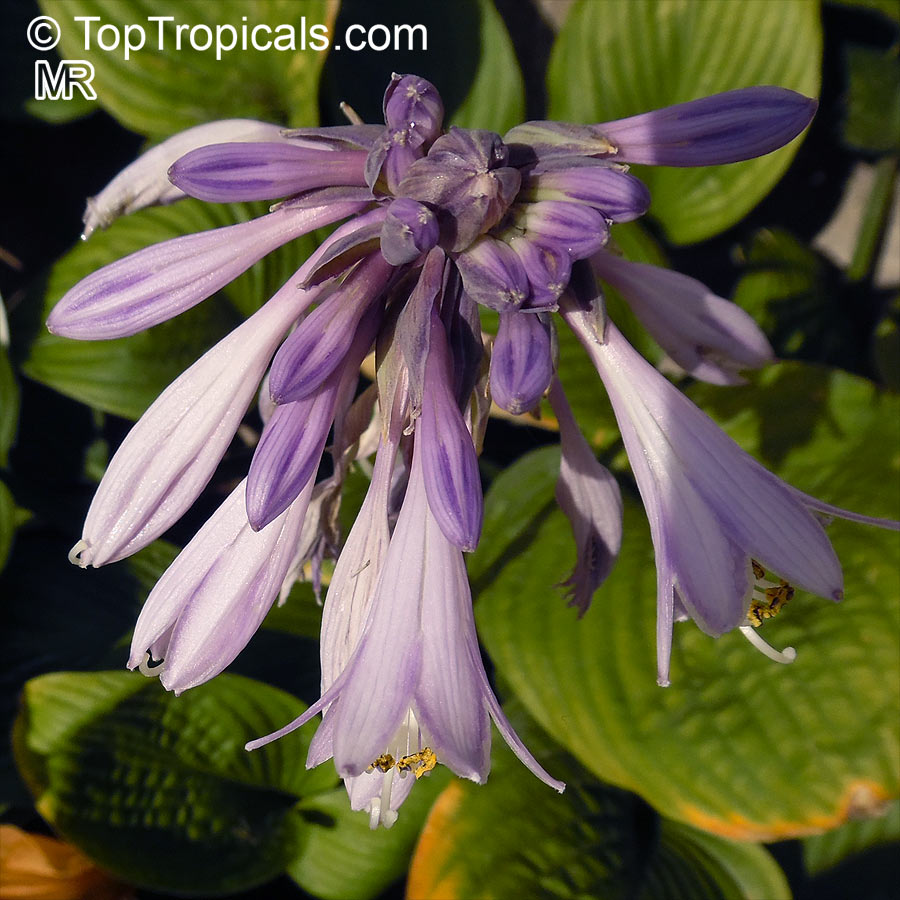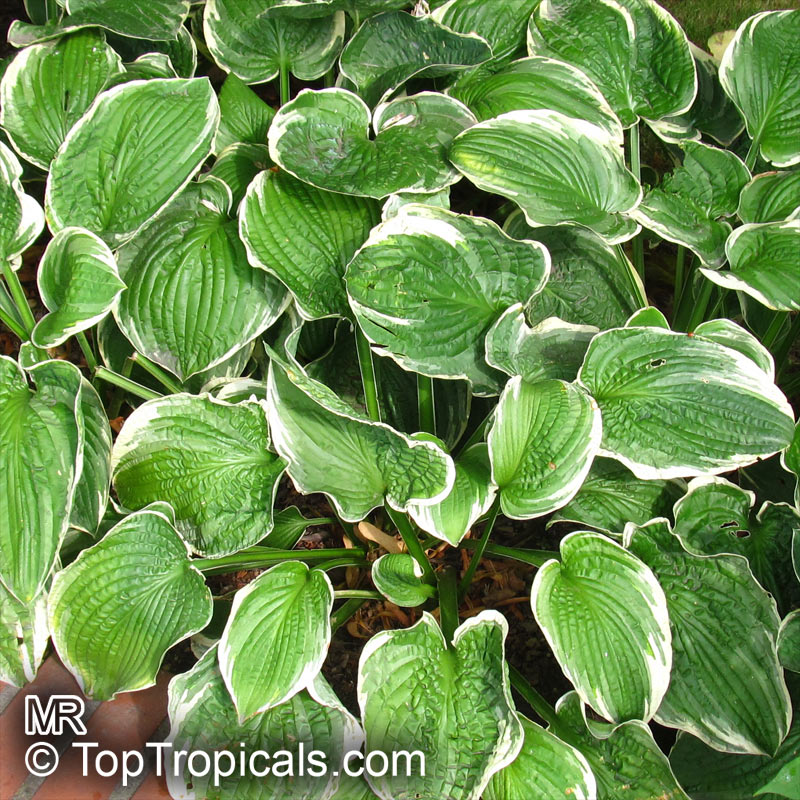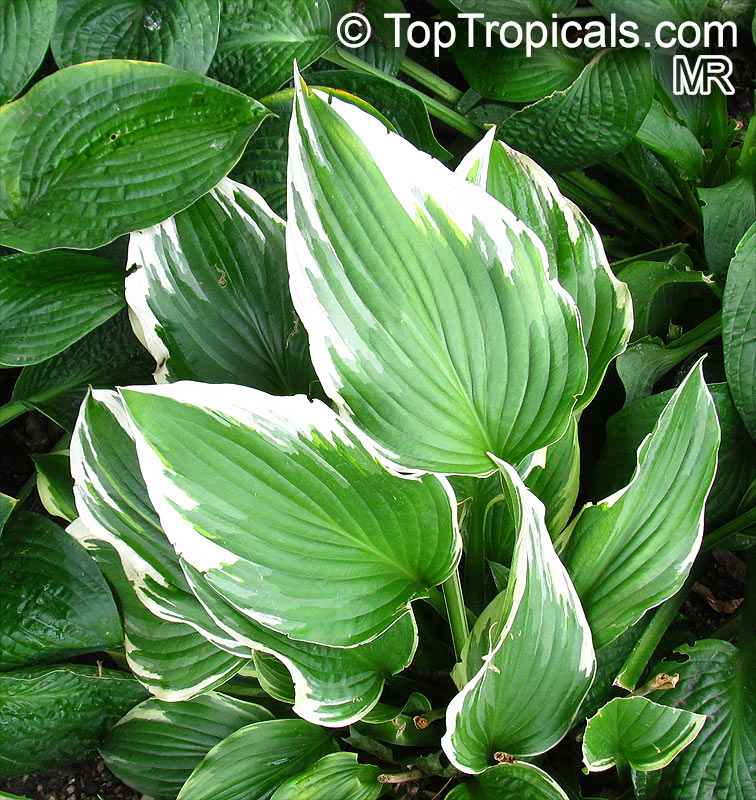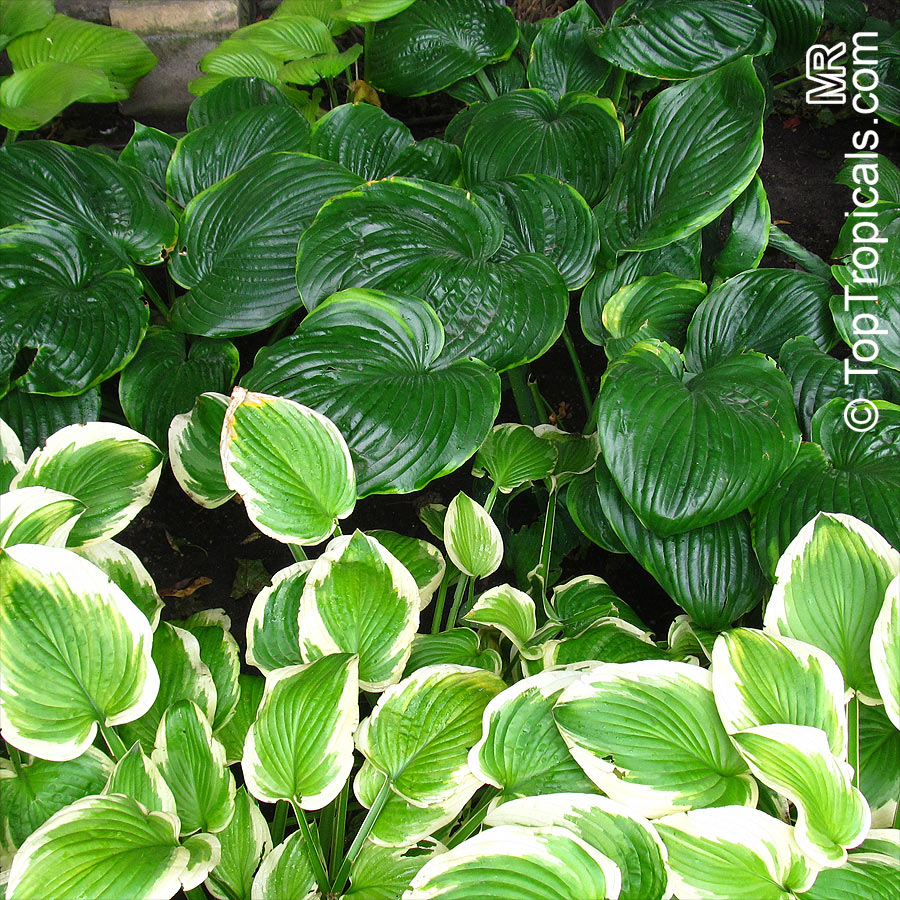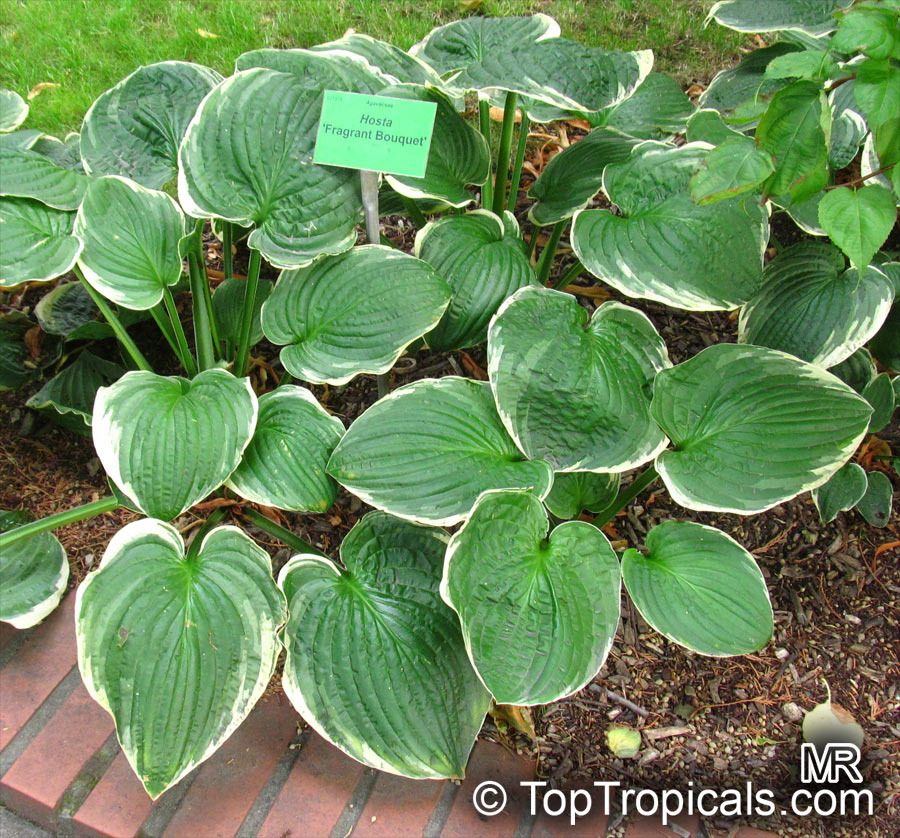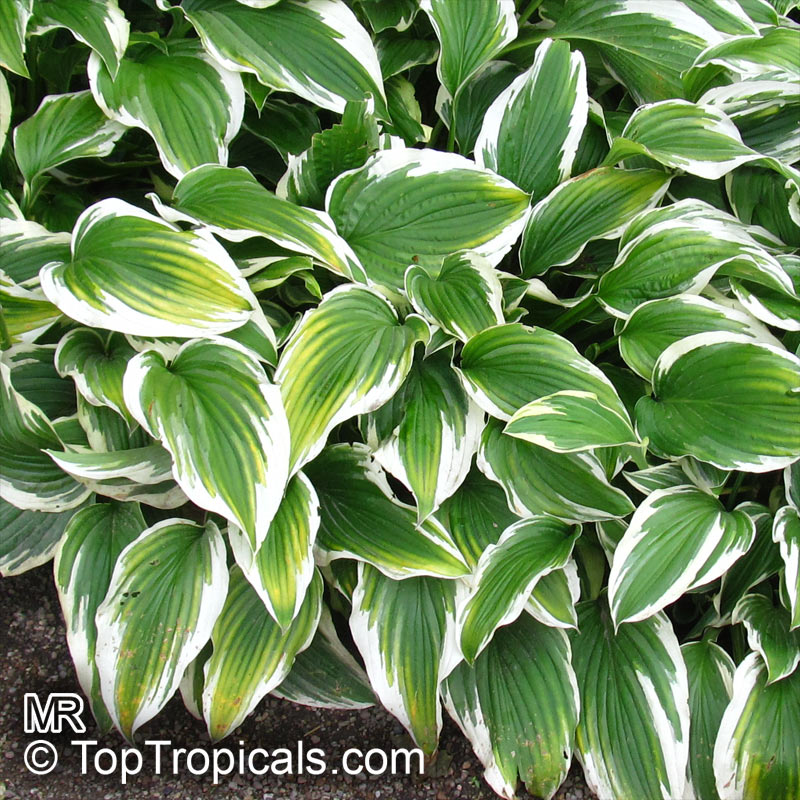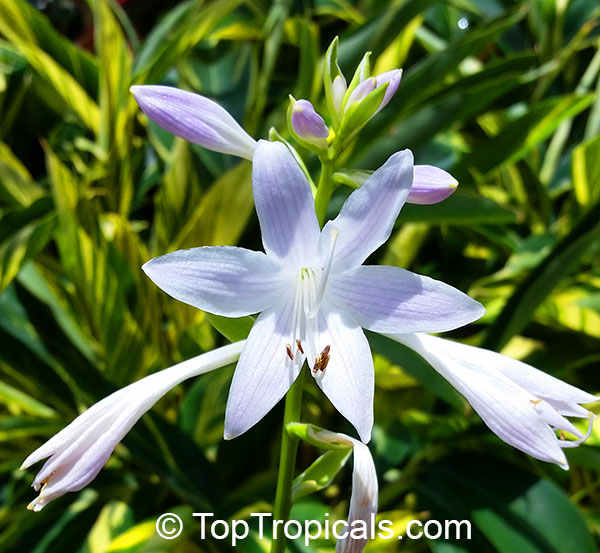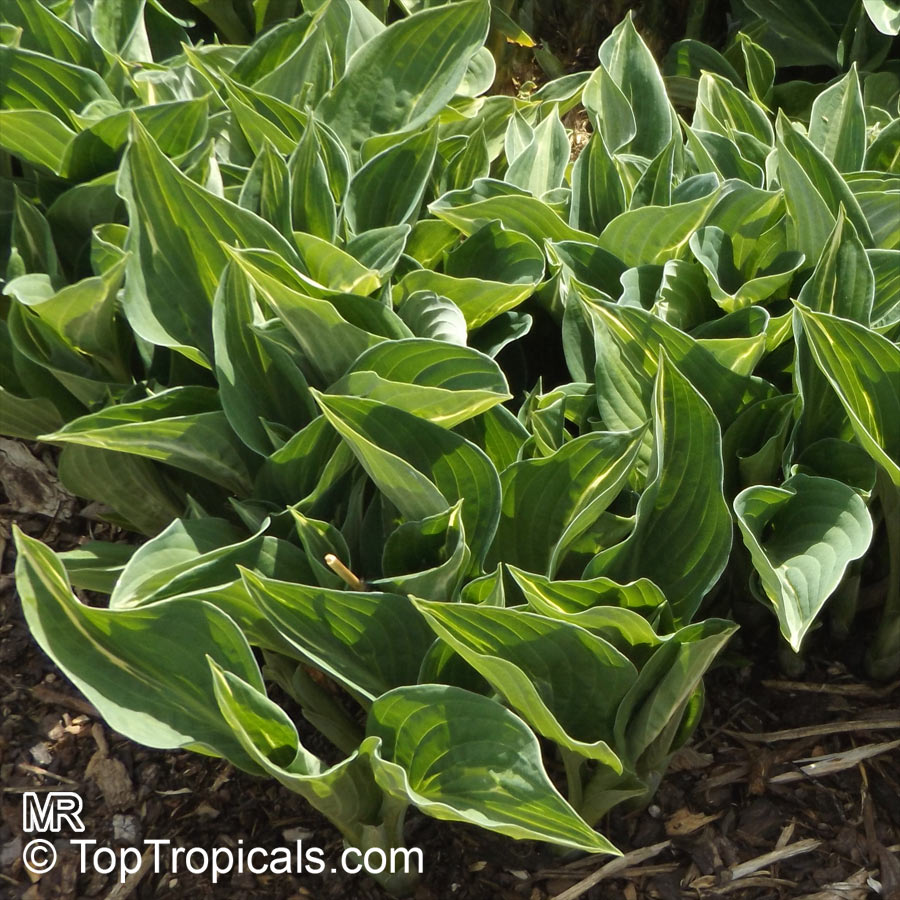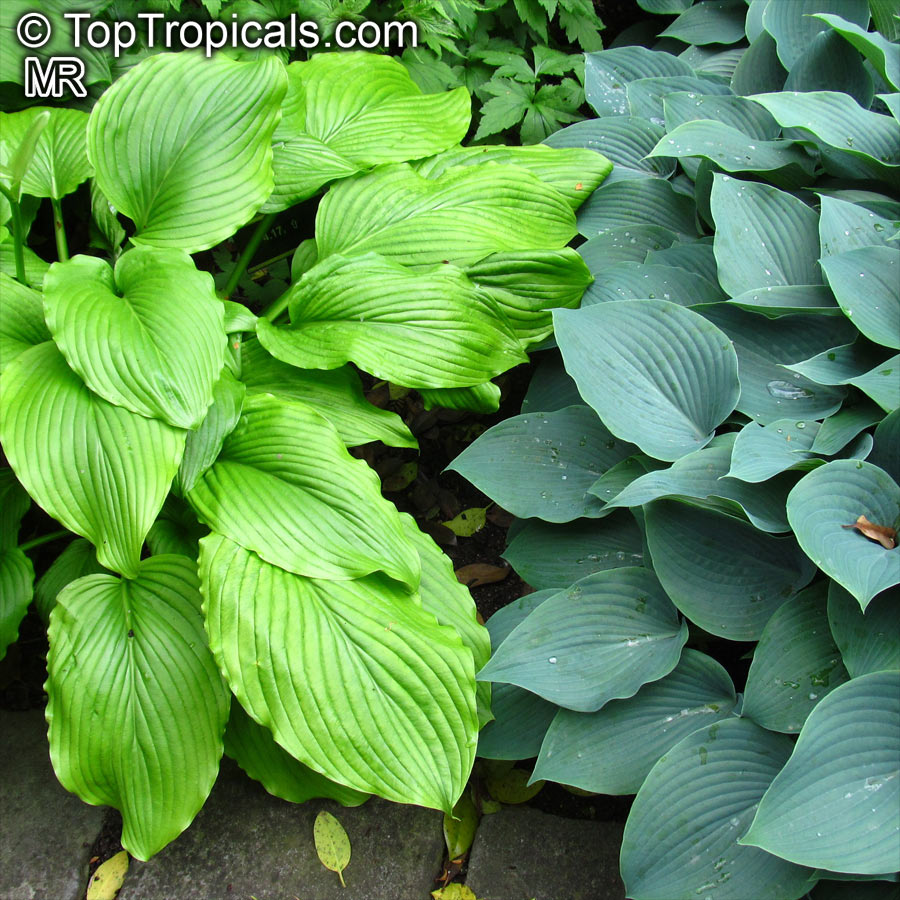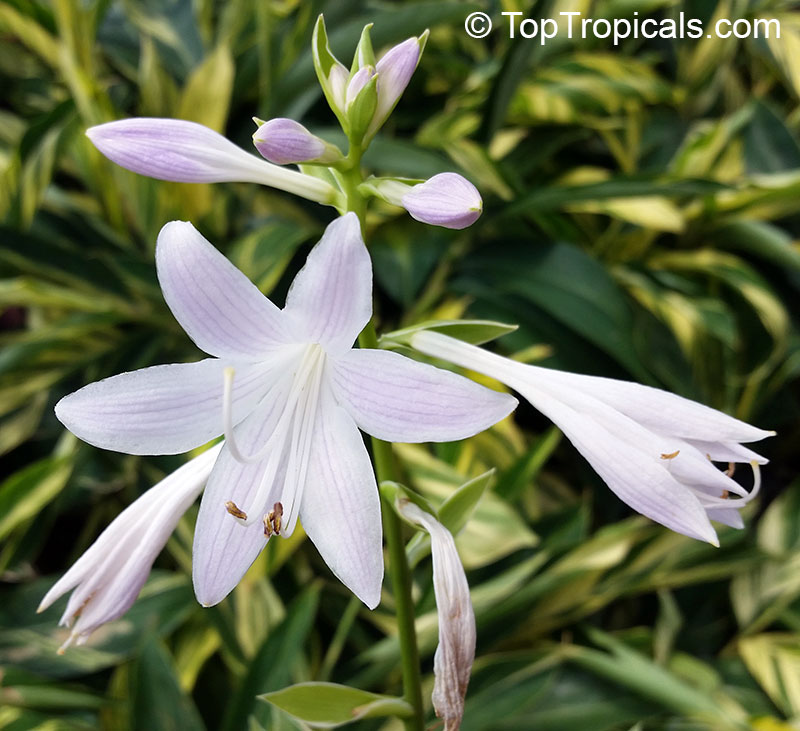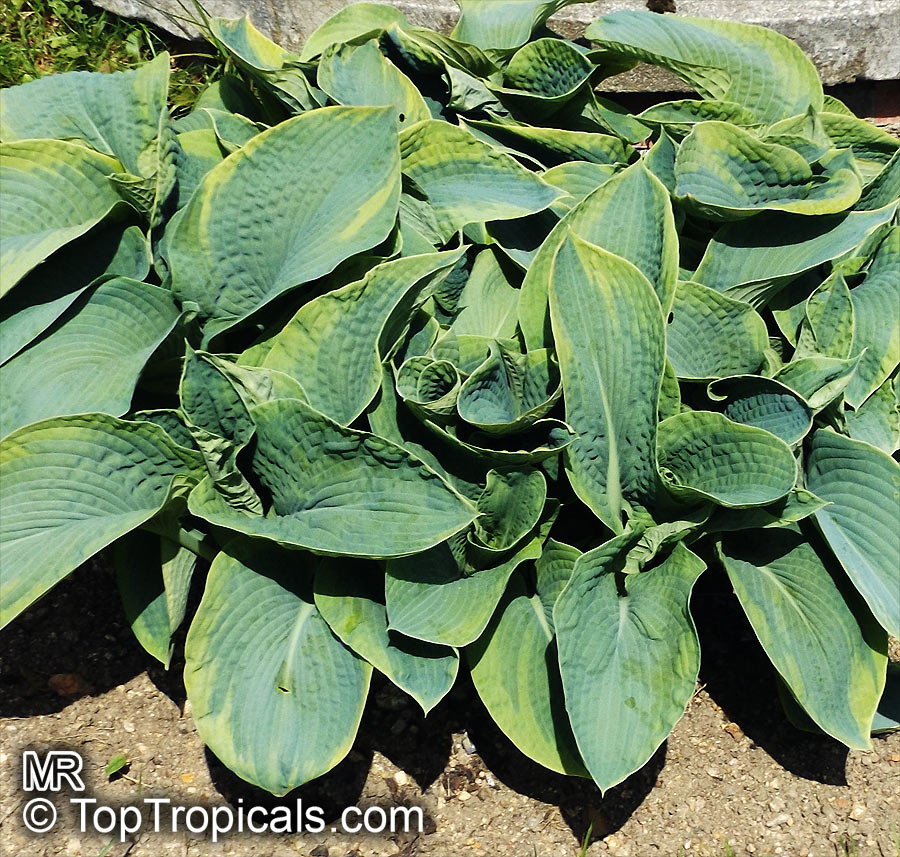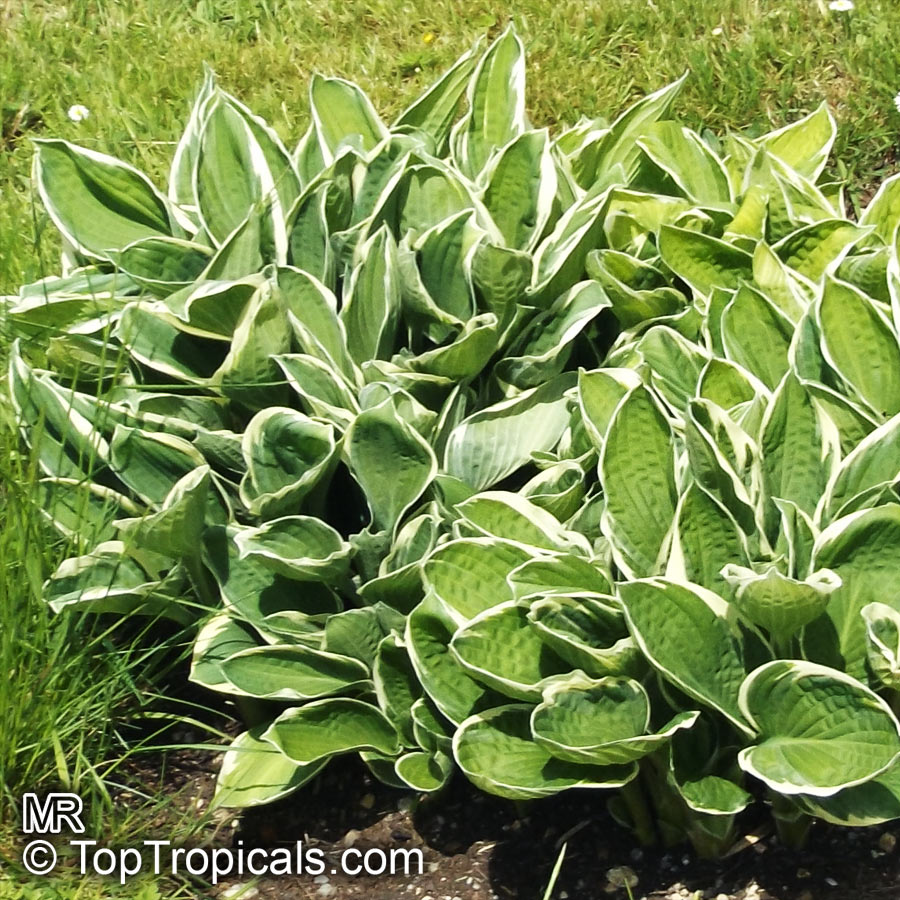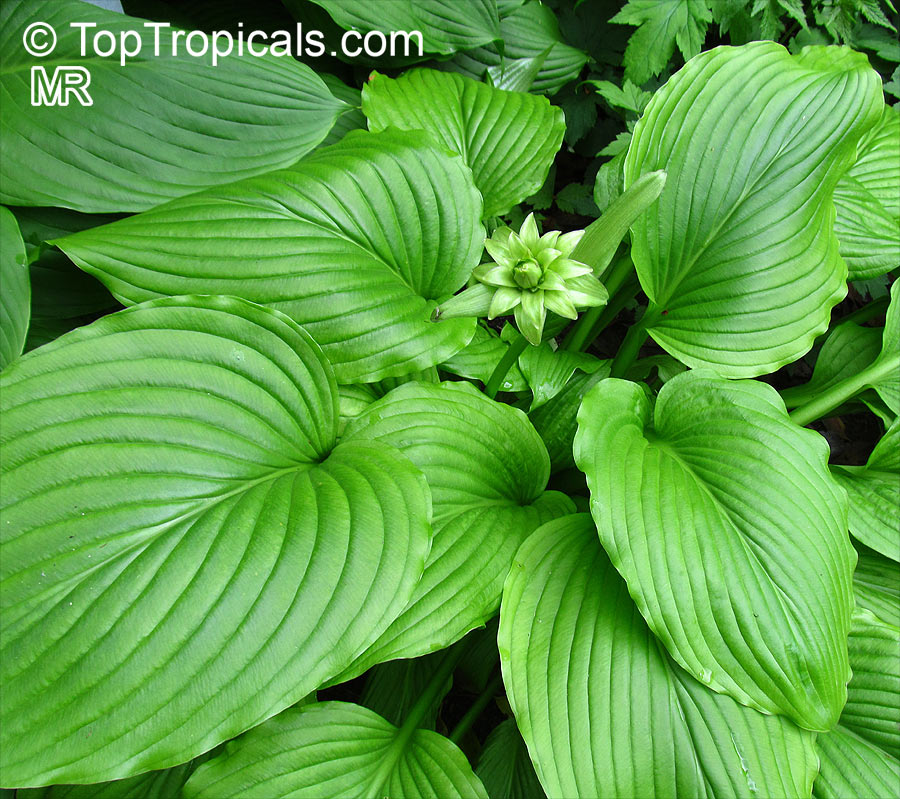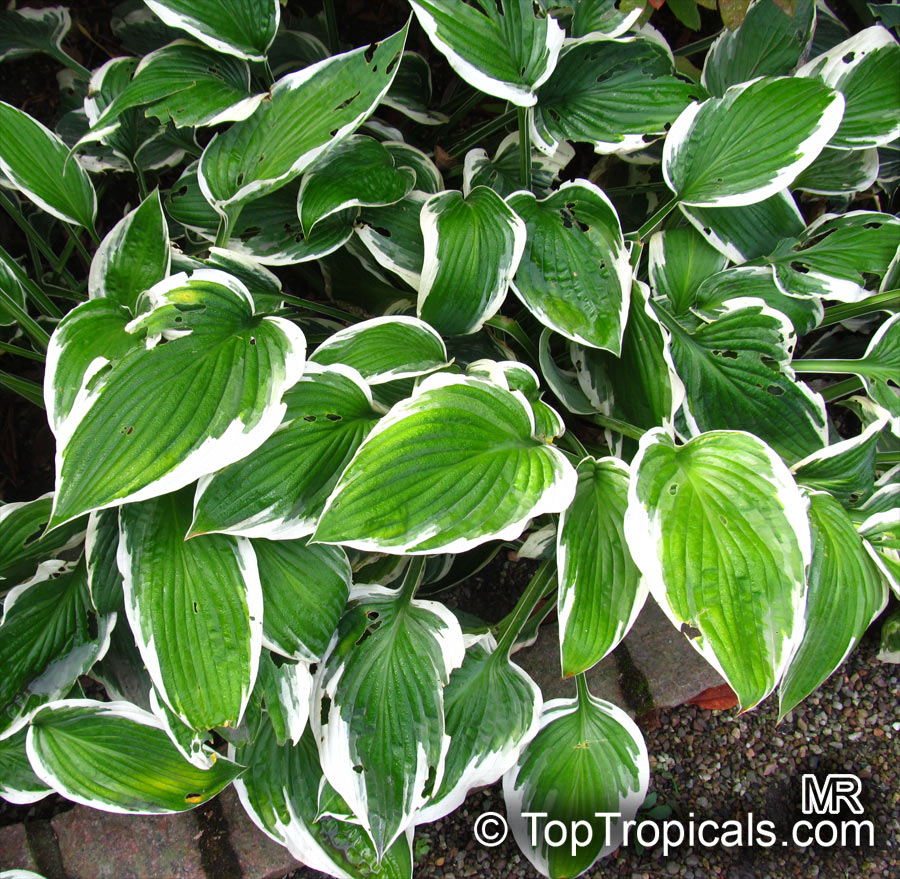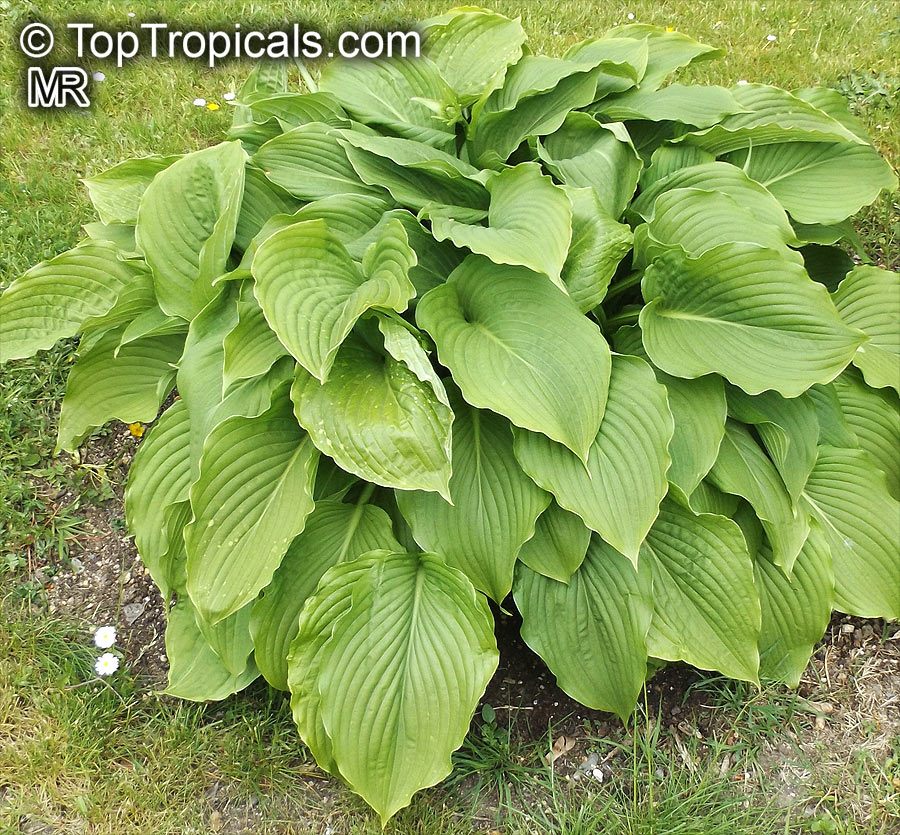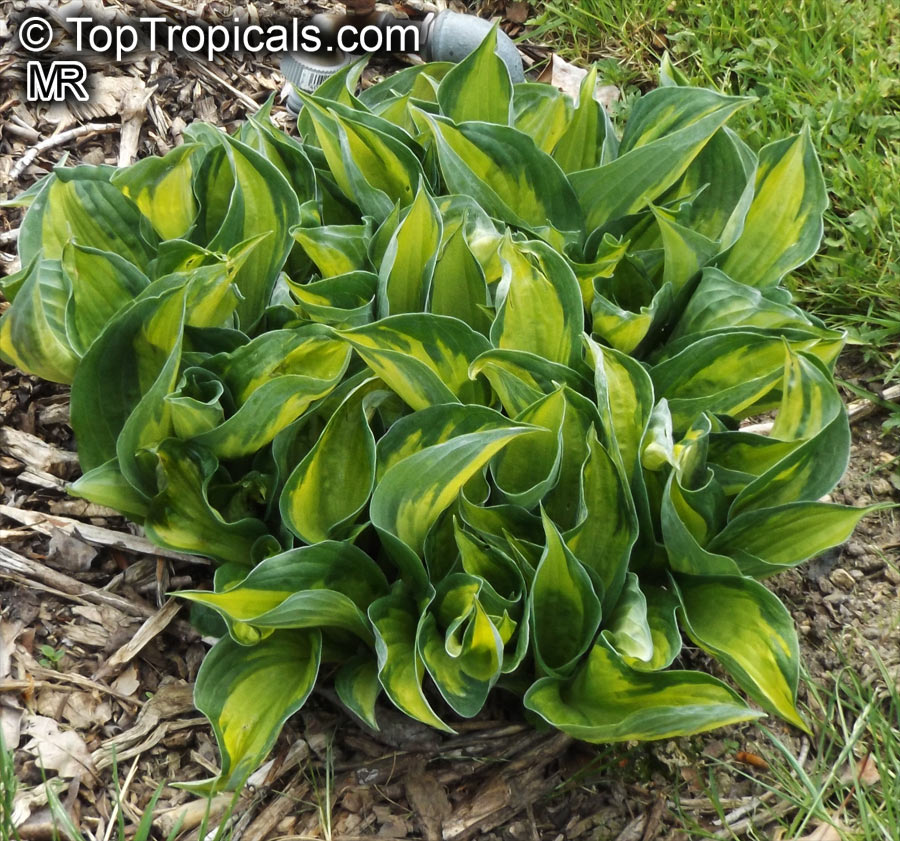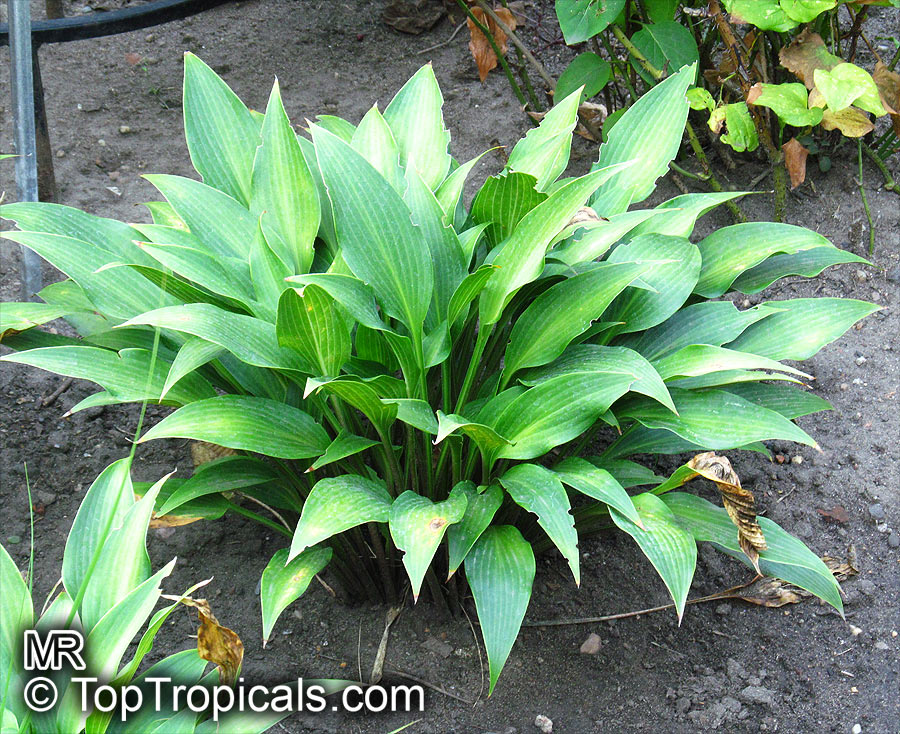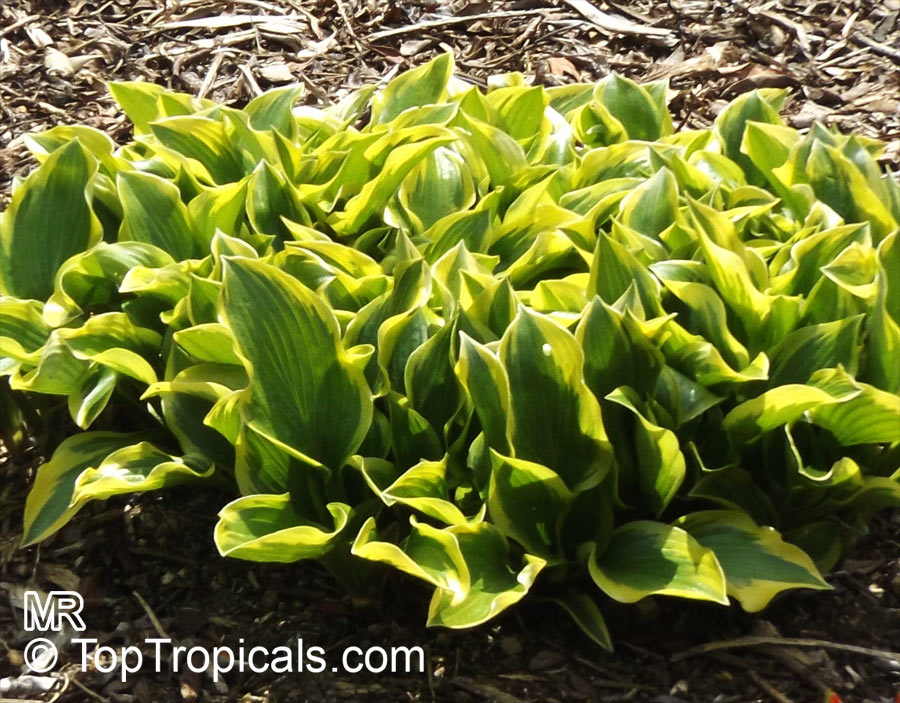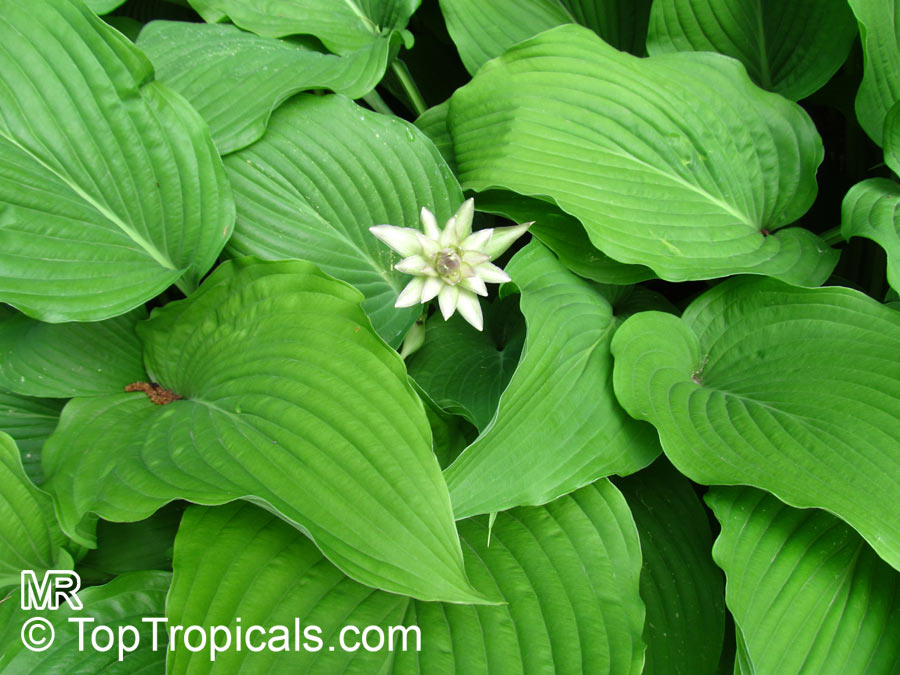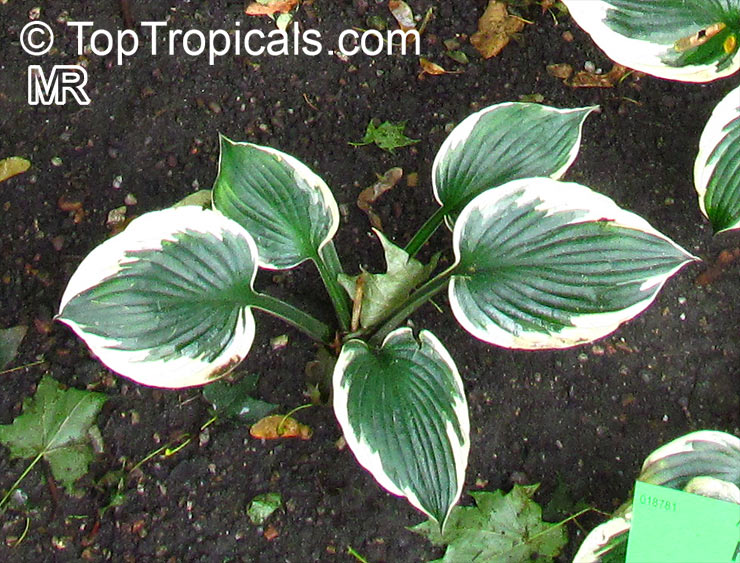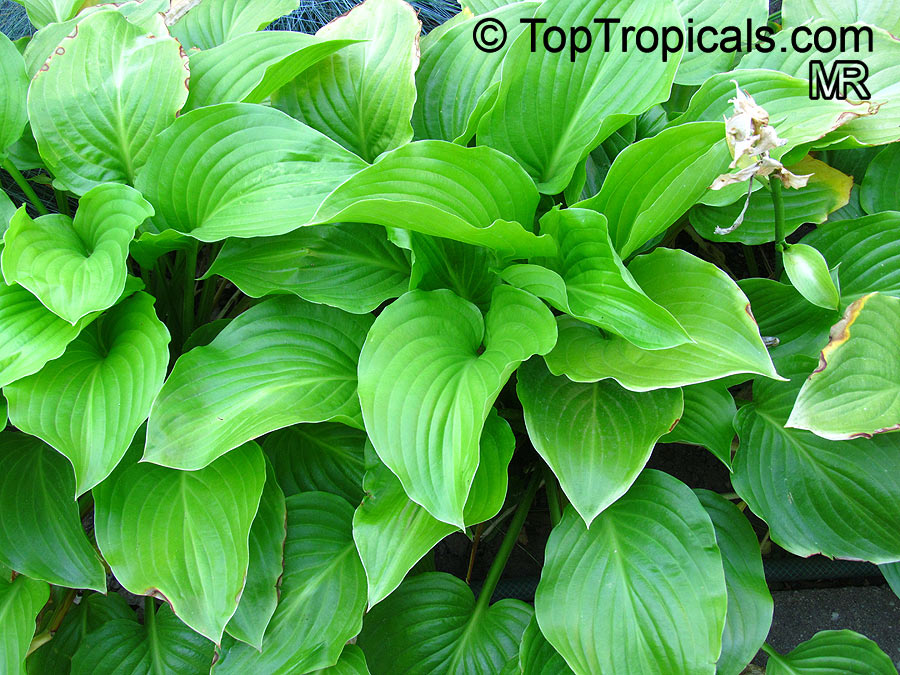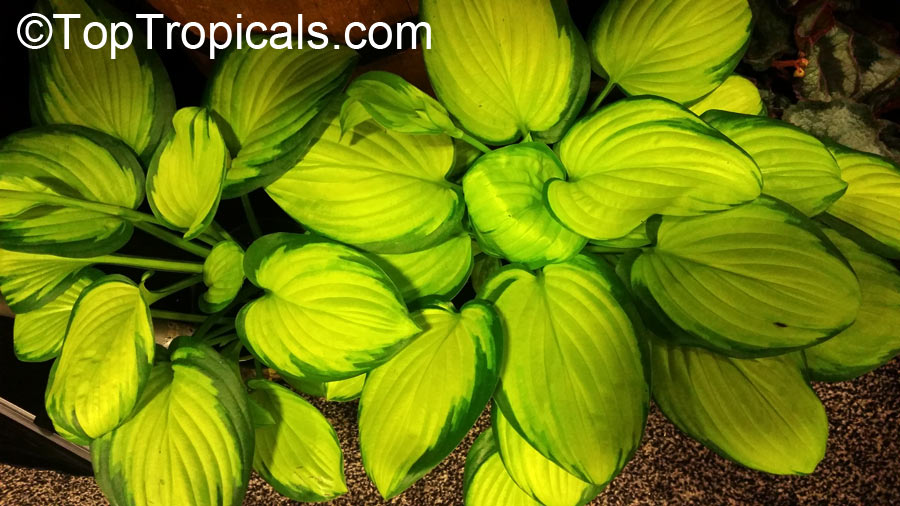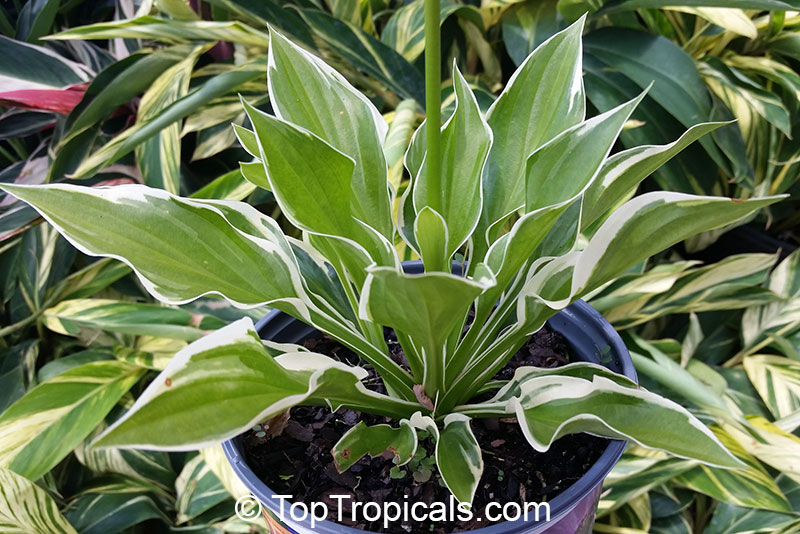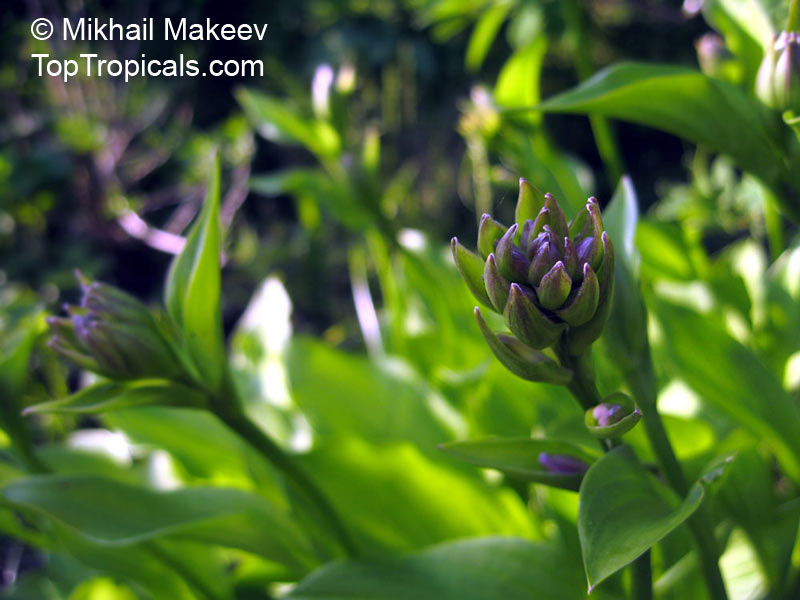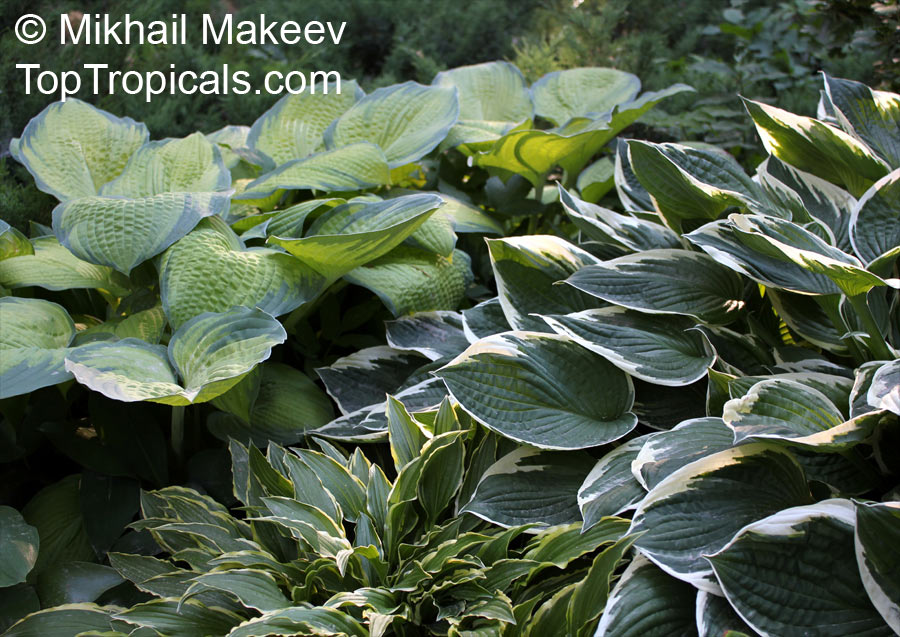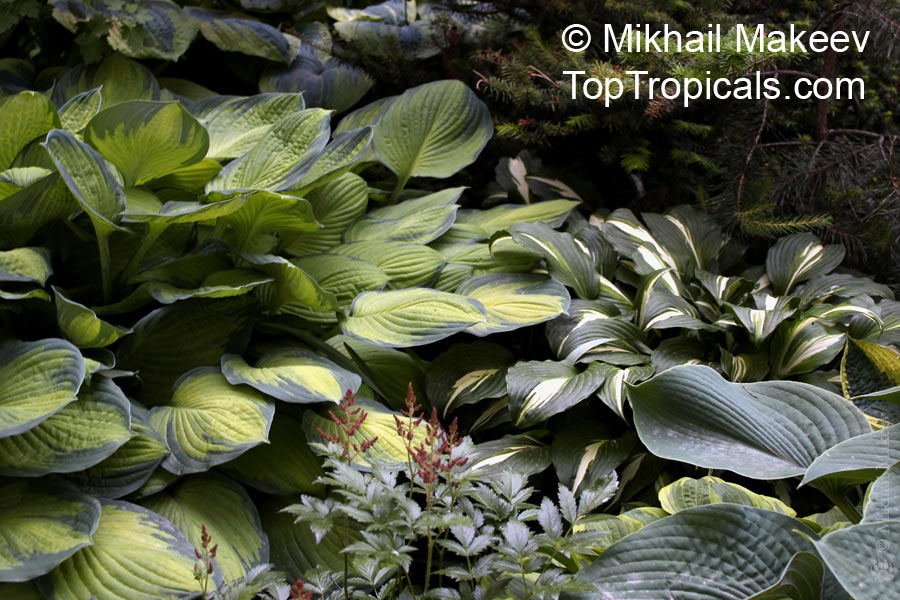Hosta sp. (Plantain Lily)
Top Tropicals Plant Encyclopedia
Botanical name: Hosta sp.
Common names: Plantain Lily, Giboshi, Hostas
Family: Asparagaceae (Formerly:Hostaceae)
Subfamily: Agavoideae
Origin: China, Japan, Korea, Russian Far East











The Hosta, or Plantain Lily is a very useful, long lived perennial for the shade garden. This family of plants is known for its decorative, large clumps of lush green foliage and spikes of lily shaped, sometimes fragrant flowers which appear later in summer. Hosta leaves come in a broad range of solid and bi-colors, from blue to green or gold.The most common leaf shape is heartlike, but some varieties have narrow, straplike leaves.
Hostas thrive in filtered shade like you would find in their natural habitat - the forest floor. The fragrant varieties Hostas and the solid green varieties will tolerate full sun, but these types are better off with morning sun than hot afternoon sun. Hostas are somewhat drought resistant, but the more light which they receive, the more water the plant will need to survive, so watering should be increased proportionate to the brightness of the lighting. Hosta plants should be grown in well-drained, rich organic soils. Most Hostas are hardy in zones 3-9, but they will benefit from some winter protection by mulching.
Hostas can be left undisturbed for many years but if they overgrow their setting, they can be easily transplanted in the spring.
Hostas can be grown from seed which can be sown directly in the garden in spring or early summer or they can be started indoors at 70°. Germination takes 15-20 days.
They can also be propagated by dividing mature clumps.The best time is to divide Hostas is in early spring, when the new growth has just begun to show. Large clumps can be cut into quarters using a sharp, straight edged shovel, a large knife or even an axe. To divide smaller Hostas, dig up the clump and shake off most of the soil. Pull the rhizomes apart or separate them with a sharp knife, making sure each division has a good cluster of leaves and plenty of roots.
